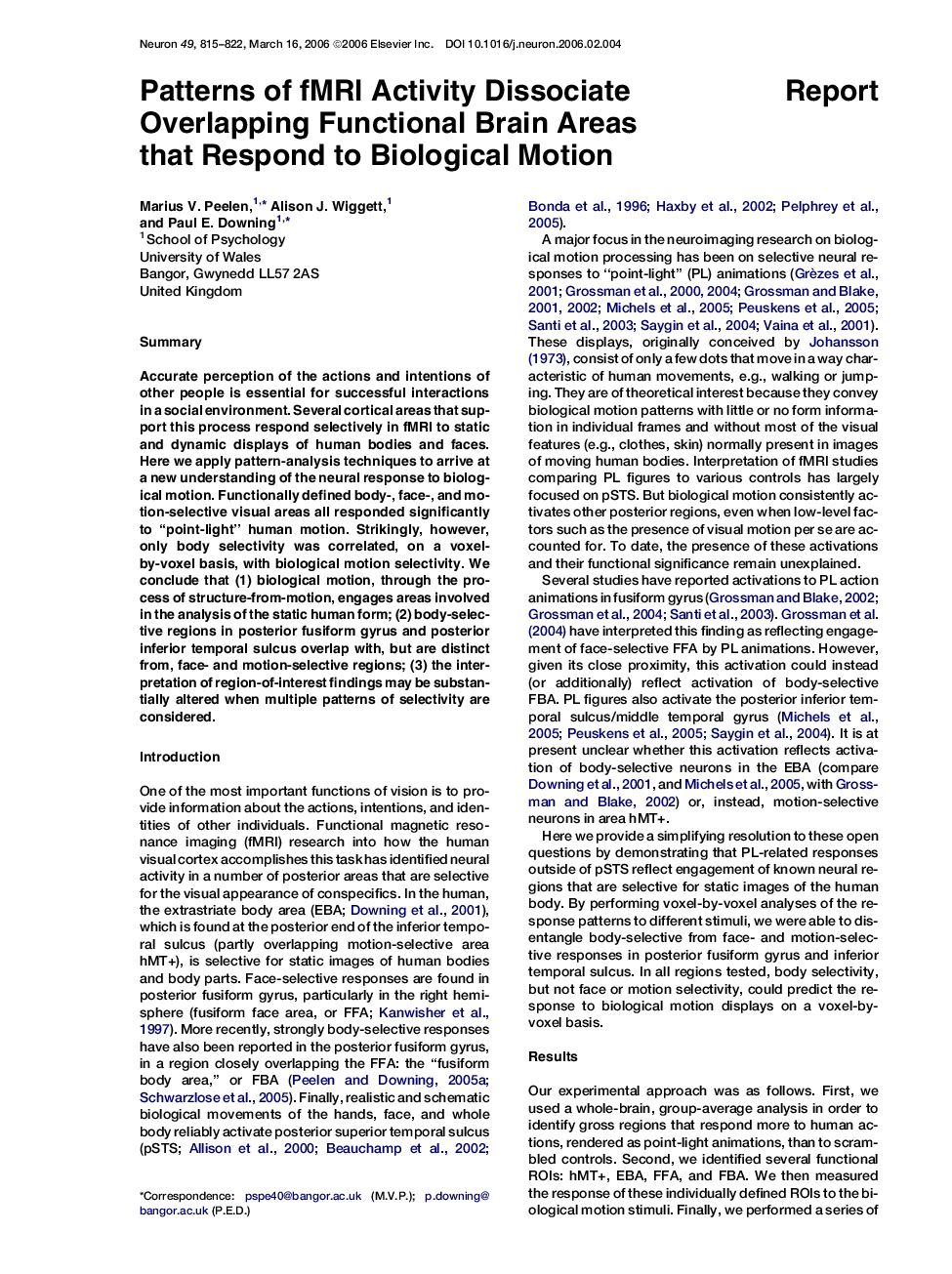| Article ID | Journal | Published Year | Pages | File Type |
|---|---|---|---|---|
| 4323329 | Neuron | 2006 | 8 Pages |
SummaryAccurate perception of the actions and intentions of other people is essential for successful interactions in a social environment. Several cortical areas that support this process respond selectively in fMRI to static and dynamic displays of human bodies and faces. Here we apply pattern-analysis techniques to arrive at a new understanding of the neural response to biological motion. Functionally defined body-, face-, and motion-selective visual areas all responded significantly to “point-light” human motion. Strikingly, however, only body selectivity was correlated, on a voxel-by-voxel basis, with biological motion selectivity. We conclude that (1) biological motion, through the process of structure-from-motion, engages areas involved in the analysis of the static human form; (2) body-selective regions in posterior fusiform gyrus and posterior inferior temporal sulcus overlap with, but are distinct from, face- and motion-selective regions; (3) the interpretation of region-of-interest findings may be substantially altered when multiple patterns of selectivity are considered.
